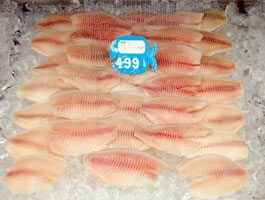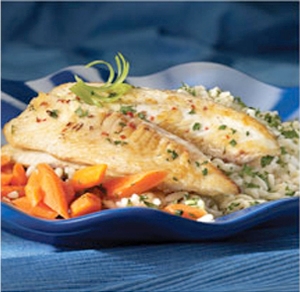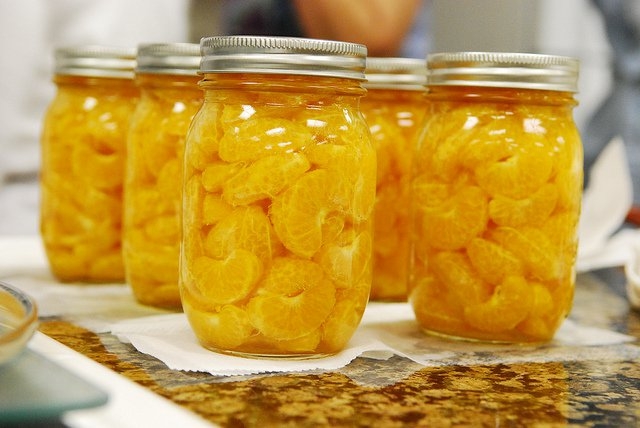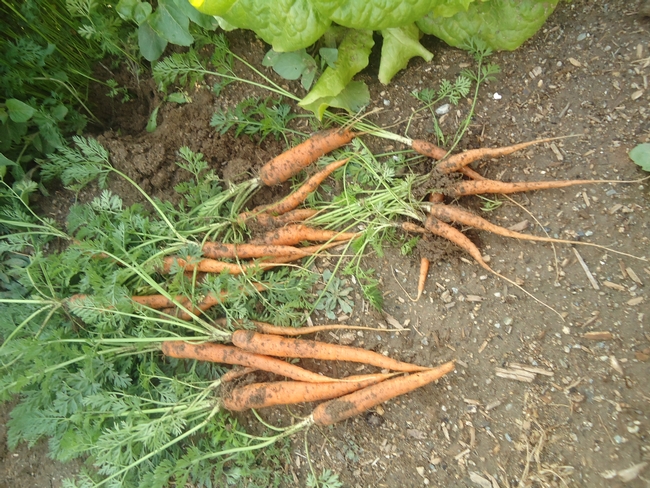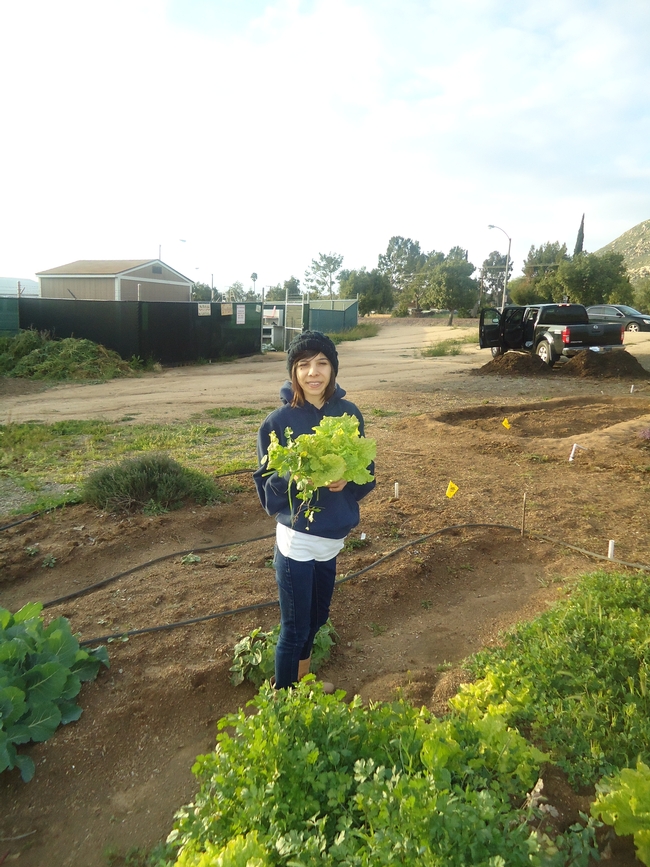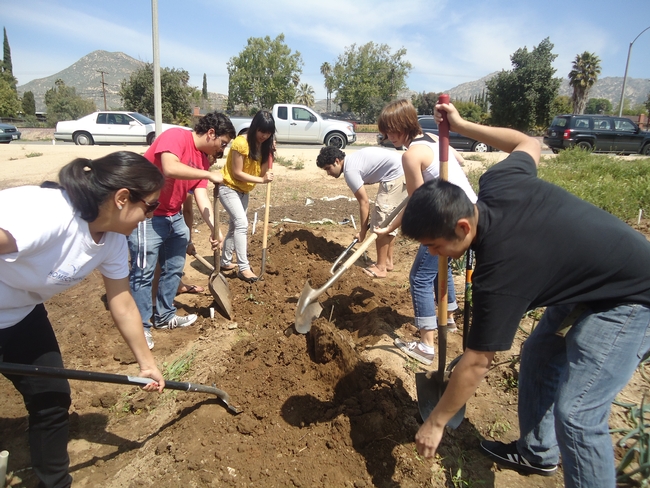UC Food Blog
Fishing for aquaculture answers
If you buy fresh fish with any regularity you’ve likely come across tilapia. A relative newcomer to American fish markets, the mild, flakey white fish originated in Africa and was introduced to American markets about 10 years ago, sometimes accompanied by favorable sustainability ratings from markets like Whole Foods. Most farmed tilapia consumed in the U.S. currently comes from fish farms in Central America.
“It's a fast-growing fish species that seems more sustainable because it is usually a plant-eater. That is, the fish can survive on plants rather than other fish,” says Alastair Iles, a UC Berkeley assistant professor of environmental science, policy, and management, whose policy research includes studying aquaculture and in particular farmed tilapia.
But sustainability turns out to be a slippery term. “Producing tilapia brings into play a wide range of issues — how developing countries are trying to create sustainable tilapia farming systems but are also struggling with the pollution and waste that they produce,” Iles says.
The scale of the aquaculture industry is expanding around the world, generating, Iles says, a number of environmental and social impacts that cause increasing concern. In addition to the waste problem that fish farms create, feed made from other fish can deplete fisheries even more, and making soy feed may involve land-based agriculture, which could lead to deforestation in countries like Brazil. Escapes of farmed fishes into the wild harm the genetic diversity of the wild tilapia, and there are land use effects as well. As a result, multiple certification schemes are emerging to try to define "sustainable" aquaculture at the global scale.
“It's essential to look at how these schemes are developing because they may affect what the whole industry looks like in the future,” he says.
Iles and his collaborator Elizabeth Havice, an ESPM Ph.D. graduate who is now an assistant professor at the University of North Carolina, are examining two certification schemes that are currently developing: the Global Aquaculture Alliance, the aquaculture industry trade group; and the World Wildlife Fund, working in partnership with the newly formed Aquaculture Stewardship Council.
A new study by the Sustainable Fisheries Partnership, a non-governmental organization, compares the two schemes, and concludes that the WWF certification is tougher in its requirements than the GAA’s standard in that farmers tend to fail the WWF requirements more often. But there is little insight into why and how these differences occur. Is it because the two organizations are using science in different ways — for example, depending on a relatively narrow fish farm-centered impacts analysis, versus using a life-cycle approach that looks at where all the inputs comes from? Or is it because the negotiators of the schemes are aiming at technology-based standards that only large-scale farms can meet?
Iles and Havice focused on the WWF and GGA schemes as most important, examining how they have been developing their standards, which have different requirements. Like the Sustainable Fisheries Partnership study, the researchers are finding that the WWF standard is more likely to be sustainable than the GAA one.
“We think the World Wildlife Fund has paid much more attention to a participatory process and has heard from many more stakeholders, whereas the GAA has been quite top-down,” Iles says. They plan to publish their findings next year.
For now, what’s an environmentally sensitive consumer to do? Avoid farmed fish like tilapia? Iles says that’s not the answer. “We need aquaculture for the foreseeable future because wild-caught fisheries just can't supply enough fish,” he says.
But he stresses that there are very different ways to practice this aquaculture. The new standards, together with Iles’ research to clarify the science behind them, should help navigate the murky waters.
“Our aim is to help improve the science-based process for developing these standards so that aquaculture can evolve into the most genuinely sustainable forms and will actually change how farmers across the world practice their work,” he says.
In the meantime, Iles recommends that if you are buying farmed fish, ask for certification to help ensure that the fish is more sustainable. The new certifications are just beginning to show up in stores, so, watch for them, and demand from your store that they be used.
How Do You Feed a Hungry World?
Like many of us, you may feel completely helpless when you hear of the desperate need for healthful food, especially in the world’s developing nations.
Experts tell us that global population will climb from 7 billion to 9 billion by 2050, and society must face the prospect of dramatically boosting food production while safeguarding the environment.
It’s a challenge of utmost importance to UC Davis’ College of Agricultural and Environmental Sciences and the theme of a Nov. 5 public program titled “Feeding a Hungry Planet.” The event, to be held in the UC Davis Conference Center, will open with a continental breakfast at 8:30 a.m., followed by presentations from 9 a.m. to noon.
Dean Neal Van Alfen and three faculty experts, featured in the current issue of the college’s biannual magazine CA&ES Outlook, will speak during the morning program. (The magazine is available online at http://caes.ucdavis.edu/NewsEvents/News/Outlook.) Topics will include an overview of global and local food challenges, as well as research on potential solutions involving sustainable agriculture, biotechnology, and the equipping of people in the developing world.
In addition to Van Alfen, speakers will be Beth Mitcham, a postharvest biologist and Cooperative Extension specialist in the Department of Plant Sciences; Kate Scow, a professor of soil science in the Department of Land, Air and Water Resources; and Alison Van Eenennaam, a Cooperative Extension animal genomics and biotechnology specialist in the Department of Animal Science.
A portion of the $35-per-person registration fee will help support the College of Agricultural and Environmental Sciences Dean’s Circle, an unrestricted fund that enables the college to meet high-priority needs and provide scholarships for students transferring from community colleges.
More information on the Outlook Speakers Series and registration for the Nov. 5 event are available online at http://outlookspeaker.ucdavis.edu or from Carrie Cloud in the dean’s office at (530) 204-7500 or crcloud@ucdavis.edu.
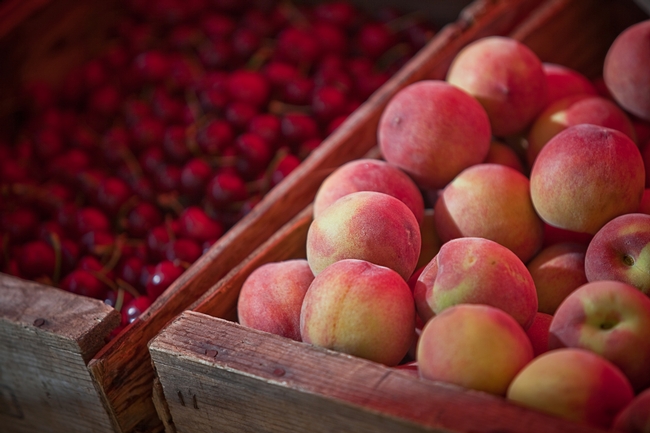
Nectarines in box pic
Home preserved foods: Nutrition friend or foe?
This time of year, many food preservation enthusiasts are hard at work in their kitchens canning, freezing, drying and fermenting. They are scouring their recipe books (USDA approved, of course!) for interesting and delicious ways to take fruits and vegetables at the peak of their freshness and preserve them so they may be enjoyed year-round. For the home food preserver, this hard work will pay off for months to come, and lucky family members and friends will delight in the delicious gifts that are sure to come their way.
When we think of preserved food, however, we often conjure up thoughts of sticky, sweet jams and jellies and salty pickles and sauerkraut. The treats from the kitchen of a home food preserver are tasty, but it's not exactly health food, right? Well, you might be surprised to learn that this is not necessarily the case.
The many benefits of fermentation
Typical fermented foods include yogurt, soy sauce, miso, tempeh, buttermilk, pickles and sauerkraut. Fermented foods have been used for centuries in almost every culture for long- term food storage, to flavor foods and in times of food shortages. These foods offer a wide variety of health benefits due to the process of fermentation, which actually increases nutrients such as folic acid, vitamin B12, nicotinic acid, riboflavin, and thiamine. Fermented foods also have "friendly bacteria" or probiotics, that are similar to the beneficial microorganisms found in our gut. More research is needed in this area, but some studies show promising results in treating bowel diseases and stimulating the immune system with probiotics. Additionally, the process of fermentation partially brakes down lactose, making it easier for lactose-intolerant people to consume milk-based products such as yogurt.
Cancer-fighting phytochemicals
When food is cooked, dried, frozen and reheated, there is always a loss of nutrients.
Vitamins A, C and B are often degraded through the cooking process, however, some cooked vegetables actually supply more cancer-fighting antioxidants than their raw forms.
For instance, researchers at Cornell University found that heat from cooking actually increases lycopene content and overall antioxidant activity in tomatoes. Lycopene is a naturally occurring chemical (or "phytochemical") found in tomatoes that decreases risk of cancer and heart disease. So what does this mean, exactly? Is it better to eat our veggies raw or cooked? Well, raw tomatoes are undoubtedly a great source of Vitamin C, but it's also a good idea to eat some canned or cooked tomatoes to benefit from the high levels of lycopene and antioxidant activity. This is true for many other vegetables in our diet, as well.
What about all that sugar and salt?
Sure, jams and jellies are often made with a good amount of sugar, and we need to use salt to ferment pickles and sauerkraut, but there are ways to preserve food without high amounts of salt or sugar.
We can't remove the sodium from fermented pickles or sauerkraut (unless we rinse them before eating), but sodium can be removed from fresh-pack pickles. You can find delicious, low-sodium recipes on the National Center for Home Food Preservation website (http://www.uga.edu/nchfp/how/diet_pick.html). One concern we may have about canned vegetables (whether homemade or store bought) is that they are often high in sodium. Well, the salt in canned food is only used to season the food, it is not necessary for safety. So, if you desire to keep sodium levels low, you can omit the salt when canning and use salt substitutes when you're ready to eat the food. Cooking with garlic and fresh or dried herbs is also great way to add flavor to a low-sodium canned food.
There are a variety of fruit spreads that can be made lower in sugar and calories than regular jams and jellies. There are also two types of modified pectin that can be used that require less sugar. Recipes for low-sugar fruit spreads can be found on the National Center for Home Food Preservation website (http://www.uga.edu/nchfp/how/can7_jam_jelly.html).
You can also use gelatin as a thickening agent in low-sugar recipes, but these fruit spreads must be refrigerated and used within a month or so, rather than canned for long-term storage.
Fruits can also be canned more healthfully in water or 100% fruit juices, rather than sugary syrups. These fruits must be ripe but firm and prepared as a hot pack. Refer to the USDA Complete Guide to Home Canning for more information. Splenda is the only sugar substitute that can be added to covering liquids before canning fruits. Other sugar substitutes can be added when serving.
Enjoy the fruits of your labor
The next time you enjoy a jar of home canned vegetables or fermented pickles, think cancer- fighting antioxidants and friendly bacteria for your gut. Not only are you consuming produce that was preserved at the peak of its freshness, but you are certainly doing your body some good!
Alternatives to fumigation and improving fumigant efficacy
Synthetic soil fumigants such as chloropicrin and 1,3-D are used by some commercial growers to control soilborne pathogens, weeds and nematodes prior to planting strawberries, onions, tomatoes, eggplant, peppers and spinach.
These fumigants and all other biocidal products with the potential to harm the environment and human health are highly regulated by the federal Environmental Protection Agency, the state Department of Pesticide Regulation, and county agricultural commissioner's offices.
UC Cooperative Extension farm advisor Oleg Daugovish and his collaborators work hard to find effective, environmentally safe and economically viable ways to improve efficacy of fumigants and to investigate alternatives to soil fumigation. The Ventura County Cooperative Extension website has archived audio and visual presentations, which include the following topics:
- Assessment of permeability of commercial tarps under a variety of cultural practices and in various soil and environmental conditions is expected to lead to better understanding of maximizing fumigant effectiveness while reducing emissions.
- Growing in substrate (soil-less culture) allows growers to produce crops with minimal plant disease and weeds without using fumigants.
- Heating soil using steam is a successful way to disinfest it. However, the process to generate steam in a field can be slow and very expensive. Researchers are working to find ways to improve speed while reducing cost.
- Most organisms, including plant pathogens, cannot survive without oxygen. Researchers are investigating an organic method to create anaerobic (oxygen-free) conditions to treat soil before planting.
- Planting mustard as a cover crop can provide many positive benefits, one of which is allelochemical compounds. These compounds found in mustard are similar to those found in fumigants. Current research shows it is possible to use this green biomass to prepare fields for production.
To read more about Daugovish's research, visit http://ceventura.ucdavis.edu/Com_Ag/comveg.
A community garden takes root
Growing your own food. Raising awareness of food and environmental injustice. And creating a green community. These are the goals of the UC Riverside community garden initiative called Cultivate R-Space. At the community garden – a student-run “living experiment” that partners with UCR Sustainability – students grow and harvest their own food such as tomatoes, squash, potatoes and lettuce. Those who want just the experience of working in the garden grow flowers.
Located on campus, the nearly quarter-acre community garden has 20 plots to offer. Tools, water and seeds are provided at no charge to users. UCR Dining Services supplies the compost.
“It’s not as easy to work in the garden as it sounds,” cautions Cynthia De Leon, a junior who got involved in managing and using the garden last year. “It requires energy and a whole lot of passion. If anything, the garden teaches you how hard it is to grow food and exposes you to issues surrounding food and agriculture. Working in the community garden takes commitment, time and effort. To make sure interested students are fully dedicated, we ask that they first volunteer about two hours a week. If after a few weeks they continue to show an interest, we assign them a plot.”
A plan being worked out now by Cultivate R-Space is to allow faculty and staff to use the community garden for a small membership fee. The fees will kick in when the garden moves, in the very near future, to a location close to campus, occupying about an acre of land. Plans are also under way to get colleges on campus – the College of Natural and Agricultural Sciences, the College of Humanities and Social Sciences, and the Bourns College of Engineering – involved to promote research and hands-on learning about various social issues around agriculture and the modern food system. Serving as a learning platform, the community garden already is being used for soil science; the Science, Technology, Engineering and Mathematics (STEM) program; and Undergraduate Research in the Community.
“Our goal is not to feed everyone with this garden, and we understand we cannot grow food for all,” says junior Elizabeth Tizcareno, who also got involved with the garden last year. “This space is a model for tangible solutions that other communities in Riverside and elsewhere can adopt. The garden is an integral tool for researching how to develop sustainable neighborhoods. It is about developing a model that can be recreated elsewhere in order to sustain ourselves, our families, and live healthier and more equitable lives.”
The community garden has helped launch an Urban Garden Seminar at UCR that De Leon and Tizcareno facilitate. Held in the spring quarter, the weekly seminar includes a discussion of a food-related topic, guest speakers and field trips.
“The seminar has opened up an invaluable learning space – with hands-on experience – for students to learn about the garden and agriculture, as well as food injustice, such as the very high cost of some foods, occurring in Riverside and elsewhere,” Tizcareno says. “Food connects people and facilitates community formation. The goal of the seminar is that the students, even after they graduate, will create gardens in their communities for growing food.”
Both De Leon and Tizcareno plan to attend freshman orientation each year to spread the word about Cultivate R-Space and how it works with community-based organizations such as Growcology, a nonprofit in Riverside that creates sustainable programs, and Riverside’s Parks and Recreation Department. They hope to recruit many new users of the UCR Community Garden.
They plan, too, to take with them a sustainability award that Cultivate R-Space received in July 2011 from the California Higher Education Sustainability Conference: the Best Practice Award for Campus-Community Partnerships.
More information about Cultivate R-Space can be obtained by emailing sustain@ucr.edu or ucrurbangardenseminar@gmail.com.


